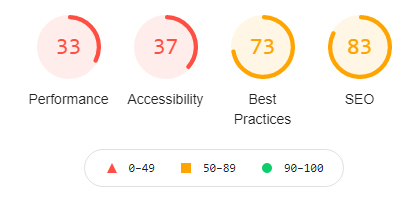CrUX – The SEO Spy in Your Pocket
CrUX is a web technology term that stands for Chrome User Experience. It is a browser-based tool for testing and reporting on website performance.
The tool is accessible to all Google Chrome users and therefore can be used easily to analyse performance of any web page.
Not all opportunities reported by Chrome are able to be resolved easily – elements are sometimes “just how it is” based on fixed constraints or elements that may be too costly in time and effort to fix.
For this reason, the cost/benefit needs to be considered for each performance improvement recommended by Lighthouse and made by the developer.

Why is CrUX important?
Serious consideration should be given to investigating how some issues could be impacting the User Experience negatively, and thereby also affecting Brand equity and conversion.
CrUX reports to Google exactly what the User Experience is like, every time a user views the page via Chrome browser. Does the page load fast enough? Is the user presented with frustrating or confusing components? How quickly can the user interact with the web page? These and other factors affect the overall experience and influence the likelihood that the user goes away feeling either satisfied or annoyed.
Because the Chrome browser is very widely used, enough data is provided to Google to eventually assume that most users have a similar or predictable kind of experience, even if not using Chrome.
Since Google’s intent is to provide good overall user experiences, they wish to avoid providing links to content where users have a poor experience. Therefore, User Experience has some direct influence on a web page’s SEO position.
How is CrUX generated and used?
CrUX is decentralised, it occurs in the user’s device, in the field, and across whatever data connection the user has available. This means that it’s a true reflection of what happens in real life, not just in a testing environment where performance is controlled and could be far different than in ‘the wild’.
The result of CrUX is reported against the web property in Google Search Console (GSC), which is the main owner-accessible interface into Google’s SEO data in relation to a website or web page. GSC aggregates the CrUX data into a report called Core Web Vitals.
Google will judge websites for SEO by their performance via a mobile device, so while desktop may be your preferred device for design layout and testing, it’s important to understand that mobile-first analysis by Google is a choice that is out of your hands.

Many web owners are held back in their SEO efforts because of hidden issues. Issues that are not easily revealed by testing across stable and repeated loads of a web page – a common trap for developers who work in a fixed environment. It’s not until the content is loaded on a fresh device, by a new user on a different data connection that the true nature of the User Experience is revealed.
If you’re concerned about what might be revealed about your website, feel free to start a conversation with me and I’d be happy to run a single page CrUX report for you for free.

